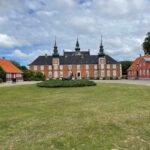
The Perfect 7-Day Itinerary on the Island of São Miguel, Azores

Nestled in the middle of the Atlantic Ocean, the Azores archipelago is a hidden gem waiting to be discovered. Among the nine stunning islands you may wonder which Azores island to visit or which Azores island is best? Well, São Miguel Island stands out as the largest and most enchanting. With its lush landscapes, volcanic craters, and unique natural wonders, São Miguel is a paradise for nature enthusiasts and adventure seekers alike.
Our 7-day itinerary São Miguel Azores escapade was filled with unforgettable experiences, from exploring botanical gardens to hiking trails along the coastline. This 7-day itinerary will take you through the island’s remarkable sights, accessible by public transport, ensuring that you can fully immerse yourself in its natural beauty without the need for a vehicle. Join us as we take you through our journey and share interesting facts about the places we visited each day.
Interesting facts São Miguel, Azore Islands
But first let’s go through some fun and interesting facts about São Miguel that will make you pack your suitcase and leave for the island immediately!
- Green Paradise: São Miguel is often referred to as the “Green Island” due to its vibrant, emerald-green landscapes, lush forests, and rolling hills.
- Hot Springs: The island boasts numerous hot springs and thermal baths, thanks to its volcanic activity. You can even witness locals cooking the traditional dish, cozido, in the geothermal heat.
- Pineapples and Tea: The Azores is known for its unique agricultural products. The island of São Miguel is famous for its sweet and succulent pineapples, which are grown in greenhouses due to the region’s microclimate. Additionally, the island is home to the only tea plantations in Europe, with Gorreana and Porto Formoso tea plantations offering tours and tastings.
- Portuguese Pavement: The island’s streets are adorned with intricate patterns of white and black stones known as “calçada portuguesa,” creating a unique urban landscape.
- Religious Festivals and Carnival: The Azorean people are primarily Catholic, and religious festivals, patron saints, and traditional holidays hold great importance in their culture. If we only stayed another week on São Miguel in June, we would be withnessing the festival of São João Da Vila (Saint John The Apostle) in Vila Franca do Campo.
- Netflix TV Series “Turn of the Tide”:The Azores gained international recognition through the Netflix TV series “Turn of the Tide” (Rabo de Peixe). It follows the life of four friends who get in trouble when a boat full of cacaine crashed at the island’s shore. We totally recommend watching it!
- Autonomous Region of Portugal: The Azores are an autonomous region of Portugal, meaning they have their own government and legislature, while still being part of the Portuguese Republic. This unique status allows the Azores to have a degree of self-governance in various areas, including education, culture, and tourism. The islands have their own flag, regional symbols, and even a regional dialect called Azorean Portuguese.
Best Time to Visit Azores
Generally, the Azores have a mild maritime climate, with temperatures rarely exceeding 25°C in summer and rarely dropping below 10°C in winter. The islands are known for their changeable weather, and to help visitors plan their activities, there are weather check video cameras strategically placed around the islands that provide real-time views of the weather conditions.
The best time to visit is typically from May to September when the weather is mild, and rainfall is less frequent. June offers pleasant temperatures, making it an ideal time for outdoor activities, but rain, wind and fog cannot be avoided definitely.
Before venturing on your own adventure, if you plan to use the public transport, we recommend checking out the bus schedules following this link here!
Now, let’s dive into our day-by-day itinerary and explore the wonders of São Miguel!
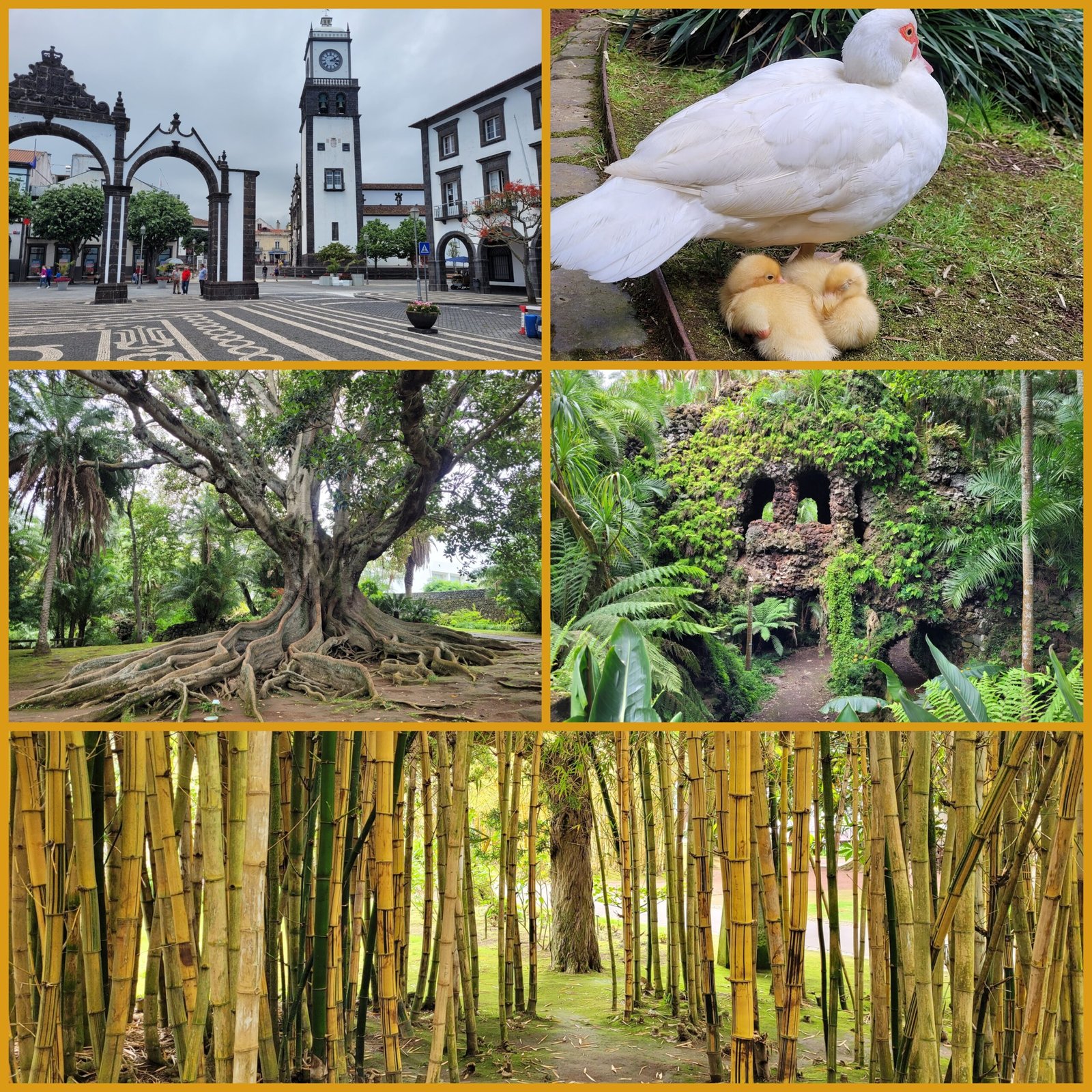
The highlights:
- After landing at Aeroporto João Paulo II, we settled into the city of Ponta Delgada
- Check-in at a hotel
- Explore the city center and Lunch
- Explore Jardim Botânico António Borges, a lush urban botanical garden
1. Arrival in Ponta Delgada – A Taste of Azorean Charm
Our 7-day itinerary São Miguel Azores began with an arrival in Ponta Delgada, the vibrant capital of the island. The excitement was palpable as we landed at the Aeroporto João Paulo II, eagerly anticipating the adventures that awaited us.
Check-in at the hotel
Our chosen base, Hotel Marina Atlântico, turned out to be a gem on its own. Located on one of the main streets of Ponta Delgada, the hotel offered stunning views of the ocean and the bustling harbor. We were pleasantly surprised to find ourselves in a room with a private balcony, providing the perfect spot to unwind with a glass of wine each evening.
Exploring the Charming City Center
Once we had settled in, we couldn’t wait to explore the city center of Ponta Delgada. This historic city is not sprawling; you can easily explore its many attractions in just a few hours.
Interesting fact about Ponta Delgada is that it is the largest city in the Azores and serves as the archipelago’s administrative and economic center. Ponta Delgada boasts several beautiful churches and religious buildings, reflecting its deep-rooted Catholic heritage. Its rich history and cultural significance makes it a fascinating destination for travelers exploring the Azores.
Have lunch at a local cafe
Our gastronomic journey began at Intz48 Coffee Roasters Azores, where we stumbled upon one of the most delightful surprises of our trip – an exquisite tomato soup. What made it truly remarkable was the waiter, who shared with us the secret behind its unique flavor. The soup was made with their homemade olive oil, adding a heavenly touch to the dish. This impromptu culinary lesson left us with a newfound appreciation for the art of Azorean cuisine. Interestingly, the Azorean cuisine is a blend of Portuguese and local flavors, with an emphasis on fresh seafood, dairy products, and unique ingredients like pineapples and exotic fruits.
Jardim Botânico António Borges: A Botanical Wonderland
Our exploration continued with a visit to the Jardim Botânico António Borges, an urban botanical garden with a rich history. Established between 1858 and 1861, this garden showcases an astonishing diversity of plant species. The garden is a testament to the island’s lush biodiversity, housing rare and exotic plants from around the world. As we wandered through the garden’s trails, we discovered hidden grottoes, serene ponds, and beautifully shaped lawns. A notable feature of the garden was its well-maintained paths and benches, making it a perfect place for a leisurely stroll or a quiet retreat. It wasn’t just a botanical paradise; it was a serene oasis within the city.
Exploring Ponta Delgada’s Treasures
In addition to the botanical garden, Ponta Delgada offers a wealth of cultural and historical attractions. As we continued our journey through the city center, we discovered several noteworthy sites:
- Ponta Delgada Bell Tower: This iconic tower serves as a symbol of the city. Its impressive structure and historical significance make it a must-see.
- Portas da Cidade (City Gates): Comprising three imposing arches adorned with intricate symbols, the City Gates are a historical and cultural landmark of great tourist interest. They offer a glimpse into Ponta Delgada’s rich heritage.
- Igreja de São José: This charming church, built in the 18th century is worth passing by and taking a few shots with your cameras.
- Forte de São Brás: Considered the most important example of 16th-century military architecture in the Azores, this fort was built to defend against pirates and corsairs who frequented the Atlantic Ocean.
Interesting fact we stumbled upon was that the Azores have a rich history of defending against pirate attacks due to their strategic location in the Atlantic Ocean. Several forts and defensive structures like Forte de São Brás can be found on the islands.
As we strolled through the city center, we couldn’t help but admire the colorful doors and windows of the local houses, the captivating street art adorning the walls, and the intricate patterns of the Portuguese pavements, which added a unique charm to the streets.
Though we had traveled for several hours on our first day, exploring Ponta Delgada left us feeling recharged and eager to uncover more of São Miguel’s treasures in the days to come.
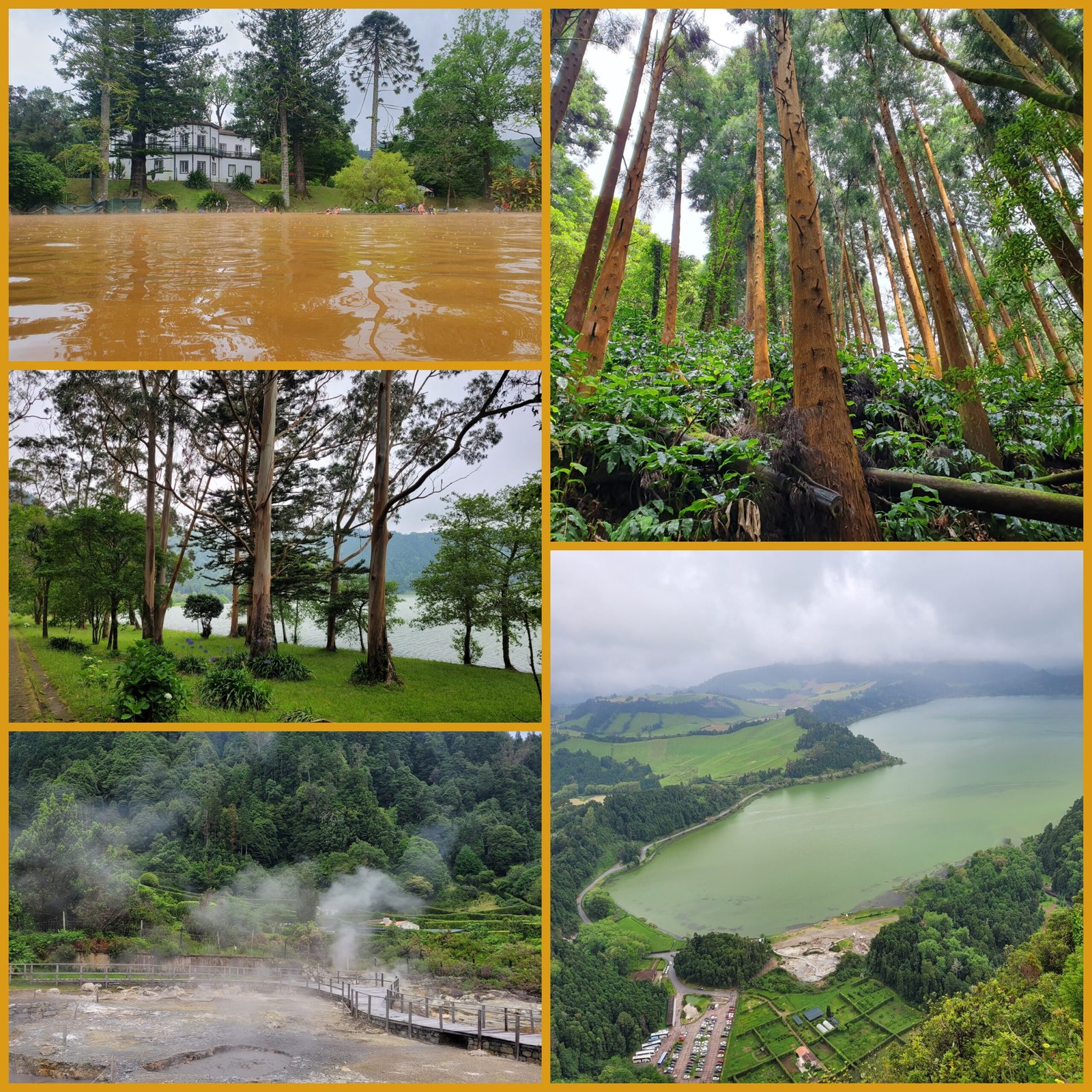
The highlights:
- Take a bus or drive to Furnas Lake and explore the hiking trails around the lake, witnessing the majestic Araucaria tree and Capela de Nossa Senhora das Vitórias.
- Explore the hot springs, and see how the traditional dish, cozido, is prepared.
- Explore the hiking trails to Miradouro de Pico for panoramic views and enjoyed the thermal baths of Terra Nostra.
2. Hiking Trails Around Furnas
trial trailsStill wonder which Azores island is the best? Let us bring you then on day 2 on our suggested 7-day itinerary São Miguel Azores.
Hiking Trails Around Furnas
Furnas is a picturesque town nestled in a volcanic crater on the island of São Miguel, known for its geothermal activity, lush landscapes, and natural beauty. We took bus 318 and stopped before entering into the city and at a parking near the lake of Furnas. A few steps furhter from the bus stop, our hiking trails began. Some of the highlights of the hike were:
Araucaria Tree: At the start of your hiking trails, you encountered an majestic Araucaria tree, one of the tallest in the world, reaching an impressive height of 50.1 meters. Araucaria trees are ancient conifers native to various parts of the world, and they are known for their unique appearance with tiered branches.
Capela de Nossa Senhora das Vitórias: On the hiking trails around the lake, you likely would come across Capela de Nossa Senhora das Vitórias, a charming chapel. This small chapel is part of the historical and cultural fabric of Furnas. It offers a tranquil spot for reflection amidst the natural beauty of the area.
Hot Springs and Cozido: Furnas is famous for its geothermal activity, which you will have the opportunity to witness firsthand. The town is dotted with hot springs, mud pots, and fumaroles, creating a surreal and otherworldly atmosphere. The most iconic of these hot springs are the Caldeiras da Lagoa das Furnas, where you would likely see bubbling pools of mineral-rich water and steam rising from the Earth’s surface.
While exploring the hot springs, you might witness the preparation of the traditional Azorean dish known as “cozido“. This hearty stew is made by cooking various meats and vegetables in a large pot buried in the ground near the hot springs. The geothermal heat slowly cooks the ingredients over several hours, resulting in a flavorful and tender meal that reflects the unique cooking traditions of the Azores.
Miradouro de Pico and Terra Nostra Thermal Baths:
Miradouro de Pico: After exploring the hot springs, you can embark on a hiking trails to Miradouro de Pico, a viewpoint that offers panoramic views of the Furnas Lake and the surrounding mountains. The steep and muddy pathway to this viewpoint may present a challenge, but the reward is undoubtedly worth it. From this vantage point, you can marvel at the stunning natural beauty of the lake and surroundings.
Terra Nostra Thermal Baths: You can finish your hiking trail at the Terra Nostra Thermal Baths in Furnas. These thermal baths are part of the Terra Nostra Garden, a beautifully landscaped botanical garden. The highlight of the garden is the large, brownish warm water pool, which owes its color to the iron content in the water. Taking a dip in these soothing waters is a unique and memorable experience. The Terra Nostra Garden itself is a lush oasis, with various plant species from around the world, providing a tranquil escape amidst the island’s natural wonders.
Read more about the hike here (map included)!
- Suggested Hiking Trail: Point-to-Point
- Starting point: Capela de Nossa Senhora das Vitórias, take bus 318, parking lot available
- Ending point: Furnas, Terra Nostra thermal bath
- Length: 10.5 km
- Duration: 3.5 hours
- Difficulty: Intermediate
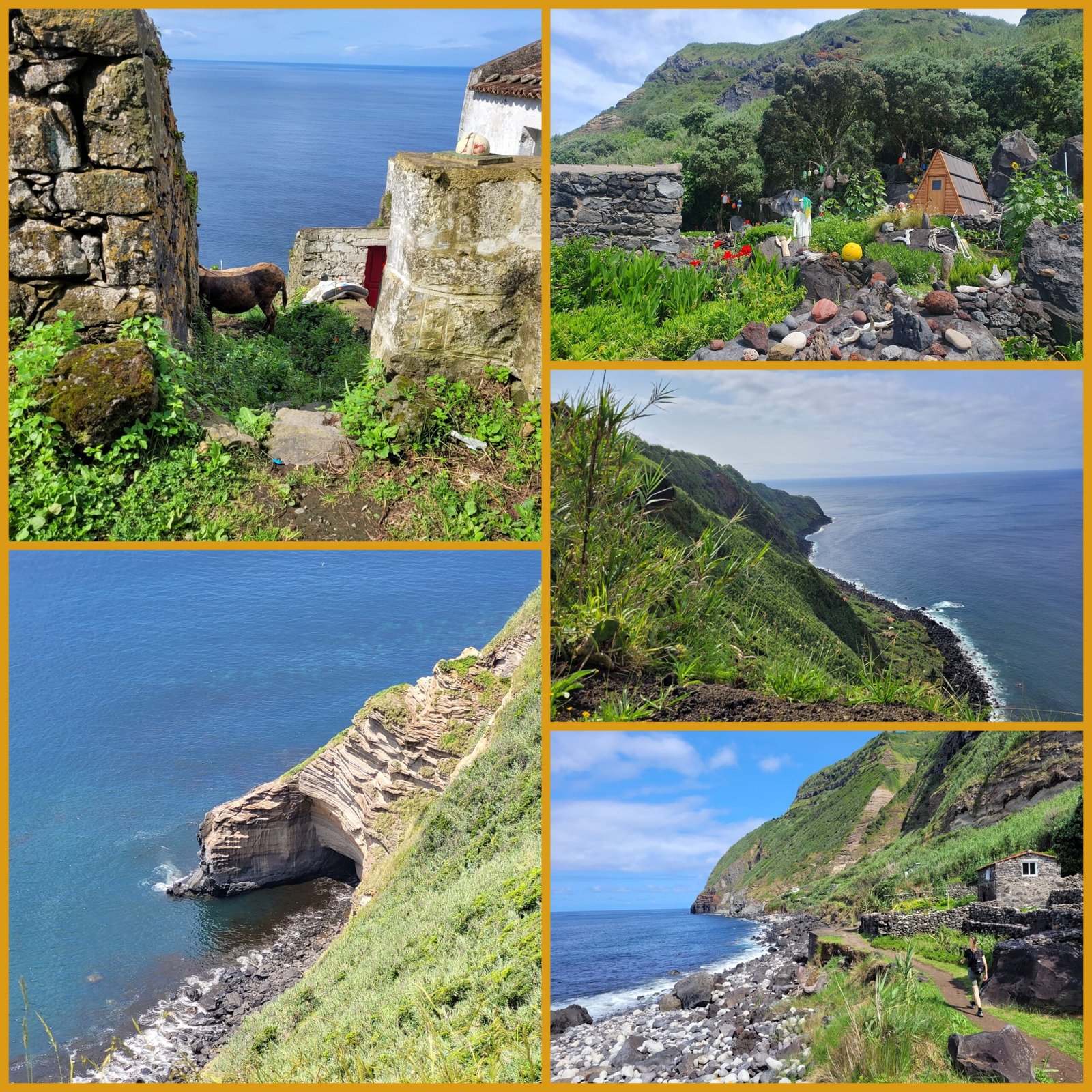
The highligths:
- Take bus or drive to Rocha Da Relva and embark on interesting hiking trails through vineyards, old houses, and stunning cliffs.
- Enjoy a view towards the ocean at a square near Relva or take a stroll through Relva’s streets
3. Rocha Da Relva hiking Trails
Rocha da Relva Trail
On the 3-rd day of our suggested 7-day itinerary São Miguel Azores, you can embark on an adventure to explore the Rocha da Relva Hiking Trail, offering a unique glimpse into the island’s natural beauty and historical heritage.To begin your journey, take a bus ride on line C200 from Ponta Delgada and stop at the church in Relva.
- Beware of Challenges of River Crossing: Upon reaching Relva, you may face a slight challenge: a river that can cross your path towards the starting point of the hiking trails. However, there is a solution, of course, to continue the hiking trails, either by walking an additional 20 minutes to find a suitable crossing point or perhaps be brave and cross the river while risking wetting your shoes.
- Vineyards, Old Houses, and Donkeys: As you traversed the Rocha da Relva Trail, you will encounter a diverse array of sights. This included vineyards, showcasing the island’s agricultural traditions, and old houses that offer a glimpse into the architectural history of the Azores. Additionally, you might have come across donkeys, which have been used as working animals on the islands for generations. The Rocha da Relva Trail features also unique microclimate characterized by moderate temperatures, high humidity, and rapid weather changes influenced by its proximity to the Atlantic Ocean. This microclimate fosters lush vegetation and is perfect for looking after grapes and fig trees in the area.
- Geological Layers: One of the remarkable aspects of the Rocha da Relva Trail is the geological history displayed in the cliffs. As you explore the hiking trails along the cliffs, you likely noticed the layers of earth, which reveal the geological processes that have shaped the island over millions of years.
- Rocha da Relva features a detrital fajã formation, a geological feature created by volcanic debris accumulation. These plains are renowned for their exceptionally fertile soil, supporting agriculture on the island.
Exploring Relva
After completing your hiking trails, you may be interested in exploring the village of Relva and enjoy its tranquility.
- Relaxing at the Viewpoint: You can stop at a square right before entereing into Relva, at the Miradouro da Relva, where you could relax and take in breathtaking views of the Atlantic Ocean.
- The Church of Nossa Senhora do Pilar is a small chapel located in the village of Relva. This charming chapel is a notable landmark in the village and is a place of worship for the local community. Its simple yet traditional architecture is characteristic of many churches and chapels found throughout the Azores.
Read more about the hike here (map included)!
- Suggested Hiking Trail: Out and Back
- Starting point: Relva (drive to Relva or take bus C200,C202,C206 and C230 to Relva)
- Ending point: Relva (drive to Relva or take bus C200,C202,C206 and C230 from Relva)
- Length: 10 km
- Duration: 3.5 hours
- Difficulty: Intermediate

The highlights:
- Take bus or drive to Mosteiros and begin a coastal hiking trails with breathtaking sights
- Swim in the warm waters at Termas da Ferraria
- Explore Pico das Camarinhas for panoramic views
- Return to Mosteiros and drive or take bus back to Ponta Delgada
4. Mosteiros to Termas da Ferraria Hiking trails
On this day from our suggested 7-day itinerary São Miguel Azores, you can go on a memorable hiking trail to the west of the island from Mosteiros to Termas da Ferraria, exploring the stunning landscapes and unique natural features along the coastal way.
Mosteiros: The hiking trails can begin in the picturesque village of Mosteiros, known for its dramatic coastal scenery. This quaint village is situated on the western coast of São Miguel and is renowned for its black sand beaches and rugged volcanic rock formations. Mosteiros is an excellent place for seaside walks and offers fantastic opportunities for photographers.
Hiking Along the Coast: As you set out on your hiking trails, you can follow the scenic coastal trails, which offers breathtaking views of the Atlantic Ocean. The rugged coastline, with its towering cliffs and crashing waves, creates a dramatic backdrop for your journey.
Termas da Ferraria: The hiking trail will lead you to the fascinating Termas da Ferraria, a geothermal wonder on the western coast of the island. Here are some interesting facts about this unique place:
- Geothermal Activity: Termas da Ferraria is famous for its geothermal waters, which are naturally heated by volcanic activity beneath the island. The result is a series of warm pools and rock formations where you can take relaxing baths in the mineral-rich waters
- Tide-Dependent Experience: One of the most captivating aspects of Termas da Ferraria is that the pools’ water temperature and accessibility vary with the tides. During high tide, the pools fill with warm seawater, providing a unique blend of saltwater and thermal water for a soothing soak.
- Spa and Wellness: In addition to the natural pools, there is a spa facility nearby where visitors can enjoy various wellness treatments, but also can pay a fee to get into the pool of thermal waters in case you were unlucky to get a high tide upon arriving in Ferraria.
- Stunning Ocean Views: While relaxing in the pools, you can relish stunning views of the Atlantic Ocean and the rugged coastal cliffs. It’s a therapeutic experience in a breathtaking natural setting.
Pico das Camarinhas: During your hike, either on your way towards Termas da Ferraria or on your way back to Mosteiros, you can also climb to Pico das Camarinhas, which offers a short but rewarding climb to a viewpoint. From here, you can enjoy a panoramic view of the volcanic thermal baths and the beautiful cliffs in the distance, probably without being distrub by other tourists or hikers.
Return to Mosteiros: After a refreshing stop at Termas da Ferraria, you can retrace your steps along the coastal trails to return to Mosteiros. You just have another opportunity to appreciate the natural beauty of São Miguel’s western coast from different angles. Alternatively, you can catch a bus from Ferraria back to Ponta Delgada.
Read more about the hike here (map included)!
- Suggested Hiking Trail: Out and Back
- Starting point: Mosteiros; Bus C206 from Ponta Delgada to Mosteiros-Ramal Mosteiros (before entering into Mosteiros)
- Ending point: Mosteiros; Bus C206 to Ponta Delgada from Mosteiros-Ramal Mosteiros (before entering into Mosteiros)
- Length: 12 km
- Duration: 5.5 hours
- Difficulty: Intermediate
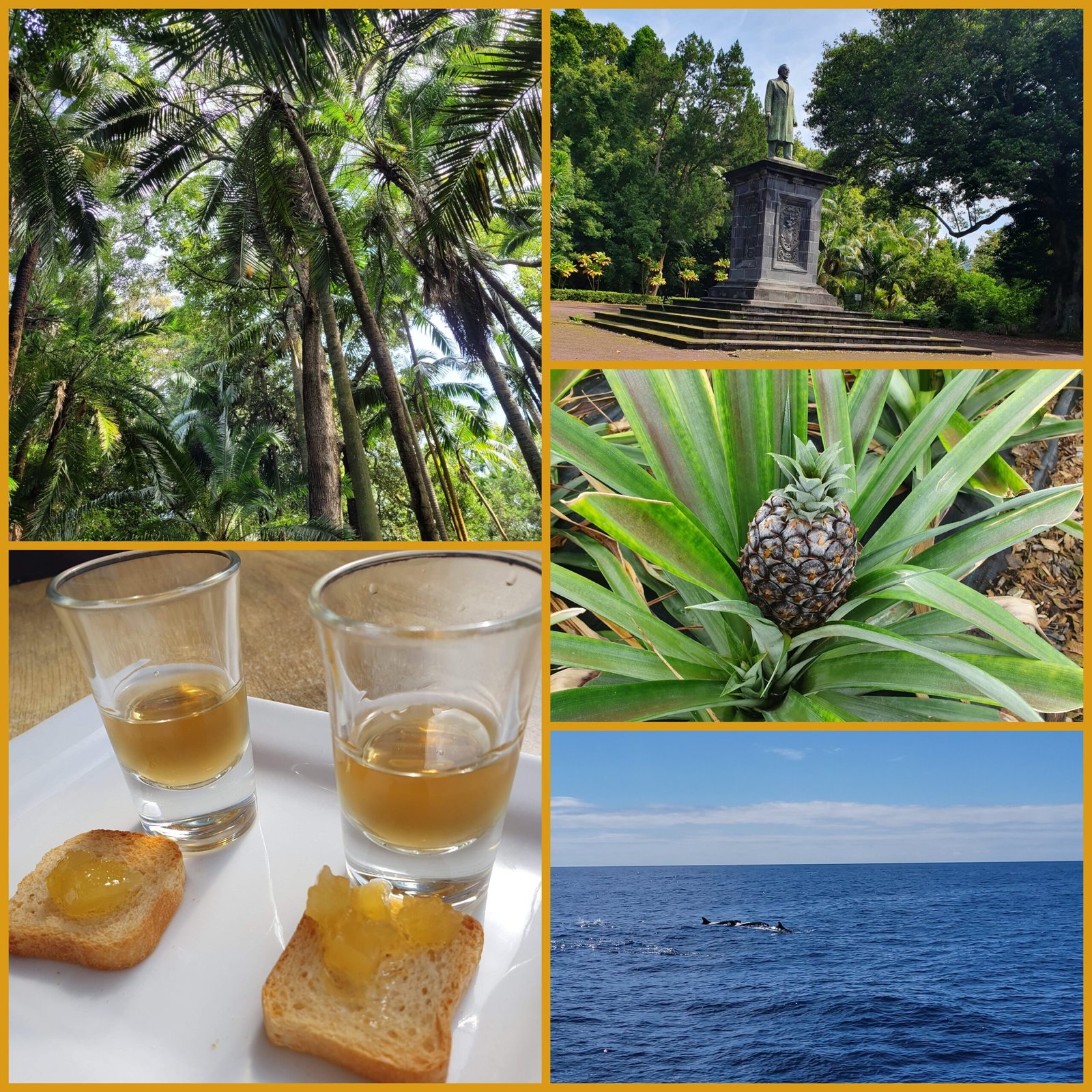
The highlights:
- Visit “A Arruda” pineapple plantation, learn about the laborious pineapple-growing process
- Explore José do Canto Botanical Garden and enjoyed lunch at a local restaurant
- Try a whale and dolphin safari, witness an abundance of marine life
5. Explore Ponta Delgada
On this day from our suggested 7-day itinerary São Miguel Azores, you can dedicate your time to exploring the capital city of São Miguel Island, Ponta Delgada, and its surroundings, taking in the local culture, cuisine, and natural beauty. Here are a few suggestions for what to visit and try in Ponta Delgada:
- Pineapple Plantation “A Arruda”: You can visit the pineapple plantation “A Arruda.” Here are some interesting facts about this unique place that will convice you to visit it:
- Pineapple Cultivation: São Miguel is renowned for its pineapple cultivation, thanks to its favorable climate and volcanic soil. At “A Arruda,” you will have the opportunity to witness the various stages of pineapple growth in the greenhouses, from planting to harvest. However, while pineapple cultivation in greenhouses is a hallmark of the Azores, it’s not limited to this region.
- Labor-Intensive Process: Pineapple cultivation on the island is a labor-intensive process that takes between 1.5 to 2 years from planting to harvesting a single fruit. This dedication to quality and flavor makes Azorean pineapples highly sought after.
- Pineapple Tasting: The highlight of your visit would probably be the opportunity to taste pineapple products. You may sample a delicious pineapple jam served on crisp bread and enjoyed a sip of pineapple liqueur. The flavors offer delightful blend of sweet and tropical notes.
- Exhibits: “A Arruda” often features exhibits showcasing the tools and methods used in pineapple cultivation, allowing visitors to gain a deeper understanding of this unique agricultural tradition.
- Botanical Garden Jose do Canto: After your pineapple experience, you may want to ventur to the Botanical Garden Jose do Canto. This botanical garden, established in the 19th century, is a testament to the island’s appreciation for exotic flora. It features a charming chapel and a diverse collection of tropical trees, bushes, and flowers. One of the garden’s highlights is the presence of two massive Australian Fig trees, offering a sense of awe as you stand beneath their sprawling branches. While comparing it to the Jardim Antonio Borges, you may have noticed that Jose do Canto offers a more serene and tranquil environment, perfect for a leisurely stroll or quiet contemplation.
Have Lunch: After a morning of exploration, you can enjoy a delightful lunch at a local restaurant. We went to “A Tasca,” a restaurant near the city center of Ponta Delgada. It’s worth noting that Azorean cuisine is primarily influenced by seafood and meat dishes, reflecting the island’s rich culinary traditions.
In the afternoon, you can continue your exploration of Ponta Delgada. Here are some key points of interest (see also the suggested places for day 1 if you don’t have time to squeeze everything into one day):
- Igreja do Santo Cristo: This mid-16th-century church houses the famous Image of the Lord Santo Cristo dos Milagres, covered in gold leaf and precious stones from the 18th century.
- Igreja Matriz de Sao Sebastiao: Another beautiful church in Ponta Delgada, Igreja Matriz de Sao Sebastiao boasts impressive architecture and a serene atmosphere.
- Unique Streetscapes: As you explored Ponta Delgada, you likely noticed the unique charm of the city’s streets, characterized by colorful doors and windows on local houses, captivating street art, and intricate tile patterns in the pavement known as “calçada portuguesa.”
Dolphin and Whale Safari: In the afternoon, the excitement can reach its peak as you may want to embark on a thrilling dolphin and whale safari with the local touristic agency Futurismo. You can book this trip directly at the travel agency office at the Ponta Delgada harbour or through different apps like GetYourGuide. As we set out into the vast expanse of the Atlantic Ocean with the skilled team from Futurismo, we had no idea just how awe-inspiring this journey would be. This safari provided a front-row seat to this incredible natural spectacle.
Throughout the safari, you would likely be treated to remarkable encounters with some of the ocean’s most charismatic inhabitants. Curious dolphins, inquisitive and playful, may approached the boat. It will be not long before you would spot the graceful giants of the sea—whales. These majestic creatures seemed to effortlessly stay on the surface of the water, their massive tails breaking the surface in a majestic display. The knowledgeable guides from Futurismo will likely provide valuable insights into the behaviors, habitats, and conservation efforts surrounding the dolphins and whales we encountered. We left the safari not only with incredible memories but also with a deeper appreciation for the importance of protecting these marine species.
Not for the Seasick: However, we do not recommend this trip for the sea sick people. The waves can be quite turbulent at times, causing the boat to sway. While this added an adventurous element to our experience, it’s essential to consider that this may not be suitable for people prone to seasickness.
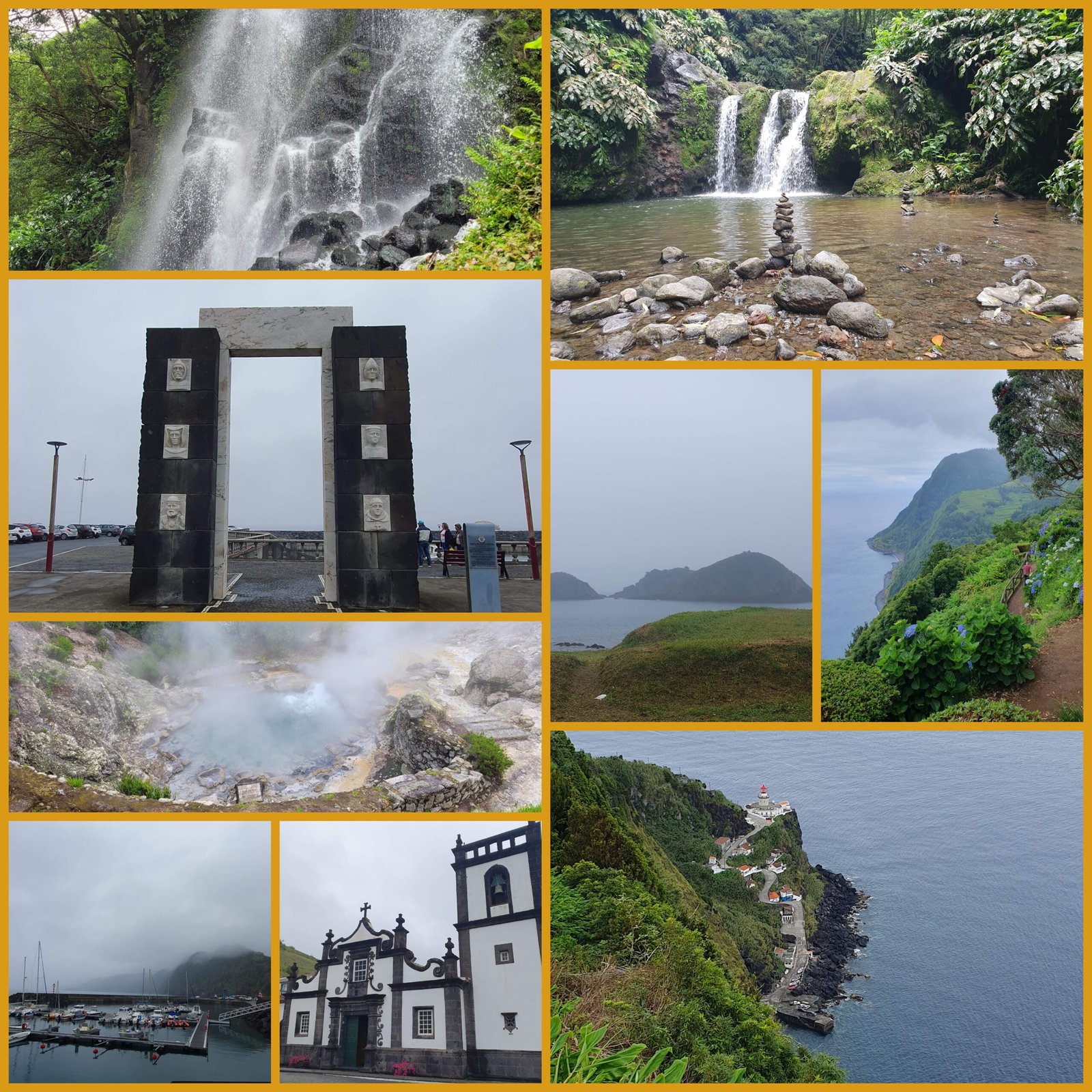
The highlights:
- Book a guided tour to explore the east part of the island, including highlights like Cha Gorreana tea plantation, Nordeste, Povoação and Villa Franco do Campo.
- Visit scenic viewpoints, gardens, and enjoyed a local lunch in Povoação.
- Return to Ponta Delgada
6. Explore east São Miguel Island
We continue further on with our suggested 7-day itinerary São Miguel Azores to prove to you that there was no doubt which Azores island is the best.
On the 6-th day of our Azores adventure, we embarked on a guided tour to explore the captivating eastern part of São Miguel. We booked ours last minute through GetYourGuide application as this day we expected a very rainy and foggy weather, but we were dedicated to make the most out of it. This day was marked by scenic landscapes, natural wonders, and a deeper understanding of the island’s unique nature and culture.
We recommend booking this trip here, as we enjoyed it quite a lot!
What made this day truly special was the fact that we opted for a guided tour, allowing us to relax and soak in the sights without the hassle of navigation. Our small van, accommodating only eight passengers, provided a personalized experience that allowed us to connect more with the island and its wonders.
Tea Plantation Cha Gorreana: Our day began with a visit to Cha Gorreana, a historic tea plantation located near Porto Formoso. Azores is home to Europe’s only tea plantations, and Cha Gorreana is the oldest and most renowned among them. We learned about the cultivation process and the rich history of tea production on the island.
Scenic Drive through Villages: The guided tour continued with a scenic drive through picturesque villages like Maia, Lomba da Maia, and Fenais de Ajuda. These charming settlements showcased traditional Azorean architecture, with white-washed houses adorned by colorful doors and flowers. The peaceful countryside offered a glimpse into the island’s rural life and agricultural heritage.
Cascata dos Caldeiros: Our next stop was Cascata dos Caldeiros, a breathtaking waterfall set in a lush natural landscape. Here, we explored well-maintained gardens and marveled at the cascading waters. For those seeking adventure, there was even an opportunity for canyoning in this area.
Nordeste: As we ventured further east, we reached Nordeste, a small town known for its mild climate and lush vegetation. Nordeste marks a significant change in climate from the rest of São Miguel, with more rainfall and cooler temperatures. This serene town offered a tranquil escape and the chance to experience a different facet of the island.
Miradouros (Viewpoints): Our tour took us to several scenic viewpoints, including Miradouro da Vista dos Barcos, which offered views of a picturesque lighthouse, and Miradouro do Sossego, surrounded by a beautiful park. These viewpoints allowed us to soak in panoramic vistas of the coastline and rolling hills, providing ample photo opportunities.
Talking about viewpoints, we have summarized our favorite ones here! Make sure to check them out.
Povoação: Our journey continued to Povoação, a historic town with a rich heritage. We explored the town center, observed the monument to the first settlers on the island, and visited landmarks like Igreja de Nossa Senhora do Rosário, where we noticed floor tiles engraved with numbers—a unique feature denoting graves. Povoação’s charming harbor, with its stunning views, provided a peaceful backdrop for our exploration.
Vila Franca do Campo: The tour then led us to Vila Franca do Campo, where we marveled at the colorful scenery. This town is famous for hosting the Red Bull Cliff Diving World Series at Islet of Vila Franca do Campo, an islet with an intriguing crater-like structure. We enjoyed a view of the islet from a beach.

The highligths:
- Take bus or drive to Sete Cidades and embark on a challenging hiking trails, admiring the Lagoas de Azul and Lagoa de Verde
- Enjoy panoramic views along the hiking trails
7. Hiking Trails in Sete Cidades
On the final 7-th day of our 7-day itinerary São Miguel Azores, we were determined to make the most of our time on São Miguel. We were not in doubt at all that we made the wrong decision about which Azores island is the best to visit. Our destination for the day was the enchanting Sete Cidades, a place of breathtaking natural beauty and mystical legends. And we should admit that this was the highlight of our stay. While our original plan included a more ambitious hiking trails to Miradouro da Grota do Inferno and Lagoa do Canario, the day had some surprises in store for us due to the poor weather that day.
Sete Cidades: A Natural Wonder: Sete Cidades, translated as “Seven Cities,” is an iconic volcanic complex on São Miguel. What makes this place truly remarkable is the presence of two striking crater lakes, Lagoa Azul (Blue Lake) and Lagoa Verde (Green Lake), separated only by a bridge. These lakes are said to represent the eyes of a star-crossed princess and her shepherd lover in a timeless Azorean legend.
Hiking Trails Along the Lakes: We followed a path that took us along the edge of the lakes, providing us with stunning panoramic views of the azure blue and emerald green waters. The path is ascending but offers relatively flat stretches from time to time and allows you to immerse in the beauty of this volcanic landscape. You will have chance to see the ocean from yet another angle.
Miradouro do Cerrado das Freiras: Our adventure started as we set out for Miradouro do Cerrado das Freiras, a lesser-known viewpoint near Sete Cidades. This viewpoint offered yet another breathtaking perspective of the iconic crater lakes, providing us with even more opportunities to capture the stunning beauty of Lagoa Azul and Lagoa Verde.
Miradouro da Grota do Inferno: Our initial plan for the seventh day included hiking trails all the way to Miradouro da Grota do Inferno and Lagoa do Canario, promising even more stunning vistas of São Miguel’s dramatic landscapes. Miradouro da Grota do Inferno, with its intriguing name translating to “Hell’s Grotto Viewpoint,” offers an elevated vantage point overlooking the lakes, providing a captivating perspective of the Sete Cidades area.
Lagoa do Canario: Lagoa do Canario, on the other hand, is a serene lake nestled amidst the island’s lush vegetation and with its unique shape of the Snapchat logo. Unfortunately, the unpredictable Azorean weather had other plans for us. The strong winds and heavy rain that swept across the island deterred us from embarking on this particular adventure.
Alternative Exploration: For those who wish to explore Sete Cidades from a different perspective, there’s the option to rent a buggy or a jeep. These vehicles can take you on an exciting ride through the terrain, allowing you to access various viewpoints without enduring the elements of climbing and hiking.
Read more about the hike here (map included)!
- Suggested Hiking Trail: Out and Back
- Starting point: Sete Cidades, bus C205,C207 and C208
- Ending point: Sete Cidades, bus C205,C207 and C208
- Length: 23 km
- Duration: 6 hours
- Difficulty: Challenging
São Miguel, Azores, is a destination that offers an array of natural wonders and cultural experiences. Our suggested 7-day itinerary São Miguel Azores proved that you can explore this enchanting island without a car, thanks to its accessible public transport system. Whether you’re admiring lush botanical gardens, hiking trails along the coastline, or savoring local cuisine, São Miguel offers something for every explorer. Here we have provided you with the answer to which Azores island is the best and when is best to visit Azores. So, pack your bags and prepare to be mesmerized by the Green Island’s beauty and charm, no matter the weather!

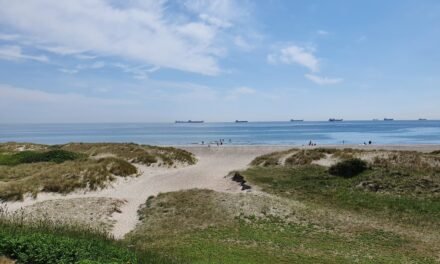



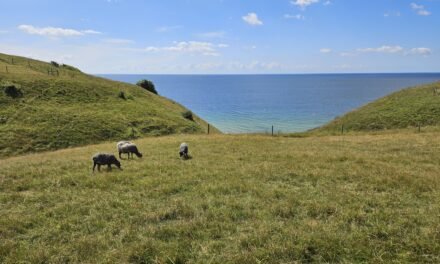
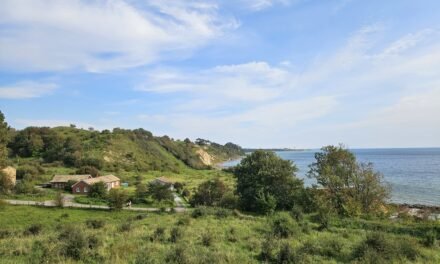
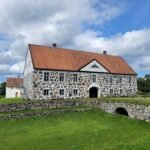

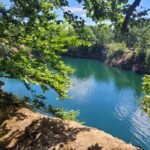

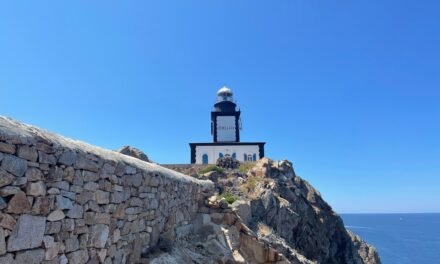



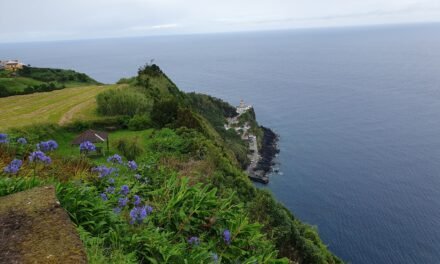
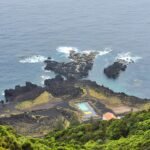

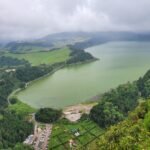
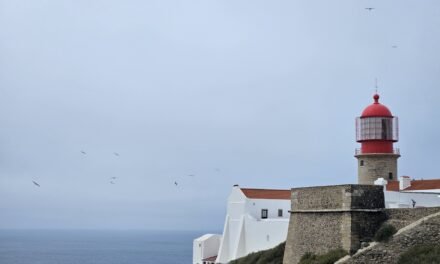

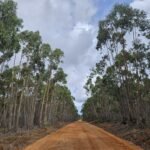
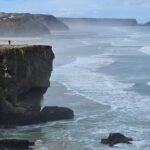
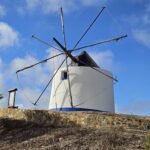









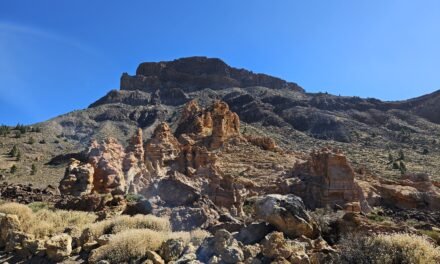
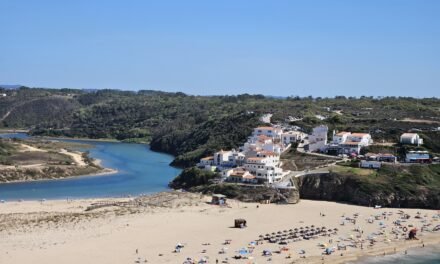
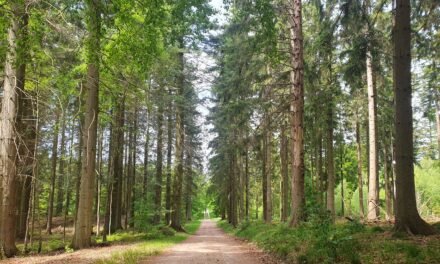
0 Comments